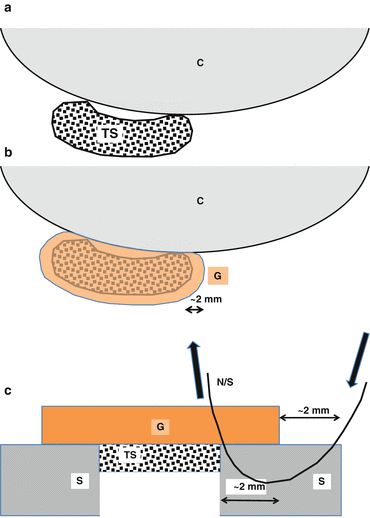(1)
St. Johns, FL, USA
(2)
Helen Keller Foundation for Research and Education, International Society of Ocular Trauma, Birmingham, AL, USA
(3)
Consultant and Vitreoretinal Surgeon, Milos Eye Hospital, Belgrade, Serbia
(4)
Consultant and Vitreoretinal Surgeon, Zagórskiego Eye Hospital, Cracow, Poland
59.1 General Considerations
Although scleromalacia is much less likely to occur following MIVS than after 20 g vitrectomy, there may be other causes1 of the VR surgeon having to face a sclera that is so thin that rupture threatens.


Fig. 59.1
Schematic representation of suturing a scleral patch. (a) The area of thin sclera abuts the limbus. (b) The patch is fashioned so that it overlays the thin area by ~2 mm, except at the limbus. (Unlike in real life, the thin area is shown here for demonstration purposes even after the graft has been laid over the sclera.) (c) Cross-sectional view to demonstrate the introduction of the vicryl suture to hold the graft. The thick arrows show the direction of the suture. C cornea, TS thin sclera, G graft, N/S needle-suture, S sclera
Pearl
Thinning of the sclera is the strongest argument against using scleral pockets to fixate a buckling element (see Sect. 54.4.2.6).
Stay updated, free articles. Join our Telegram channel

Full access? Get Clinical Tree


